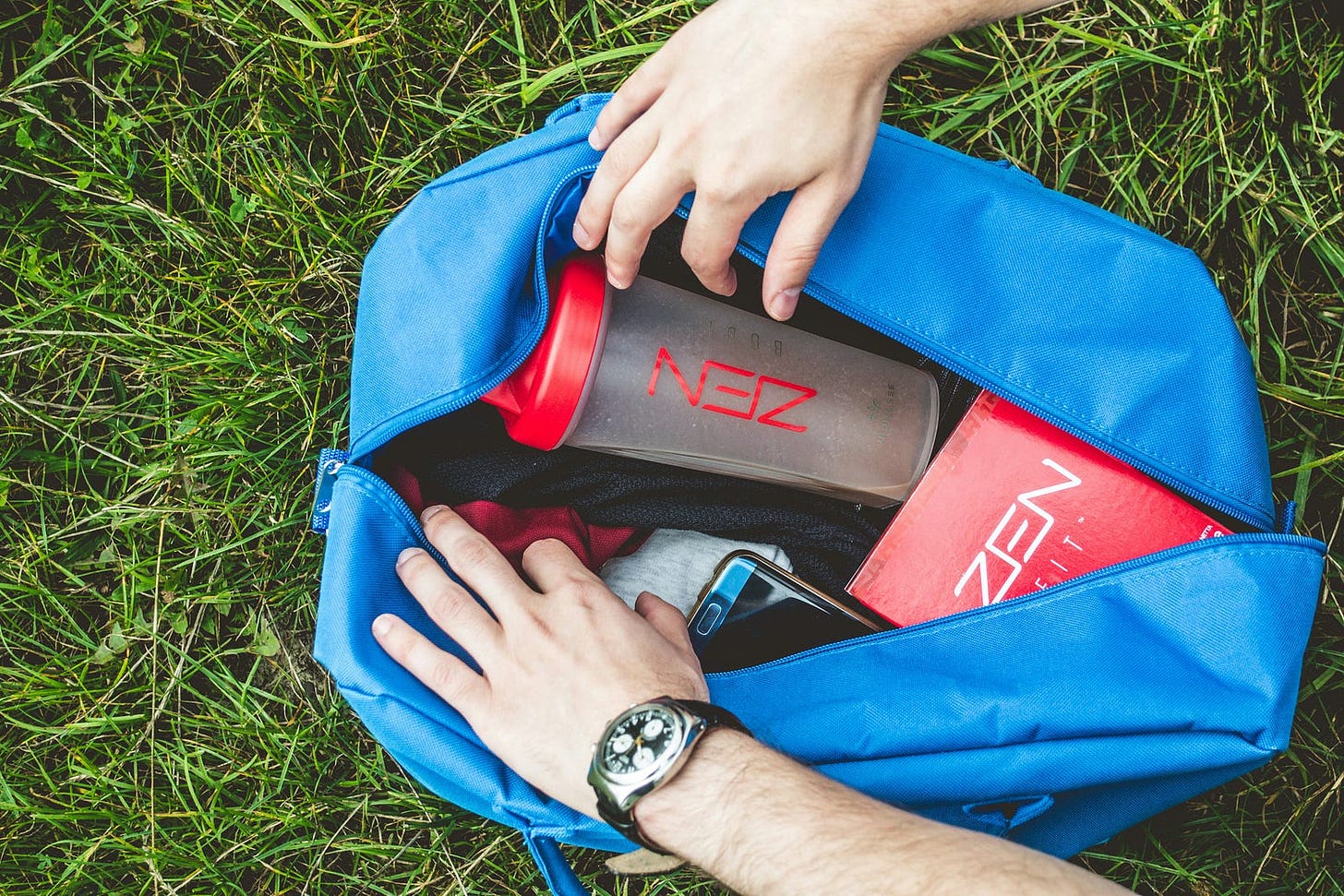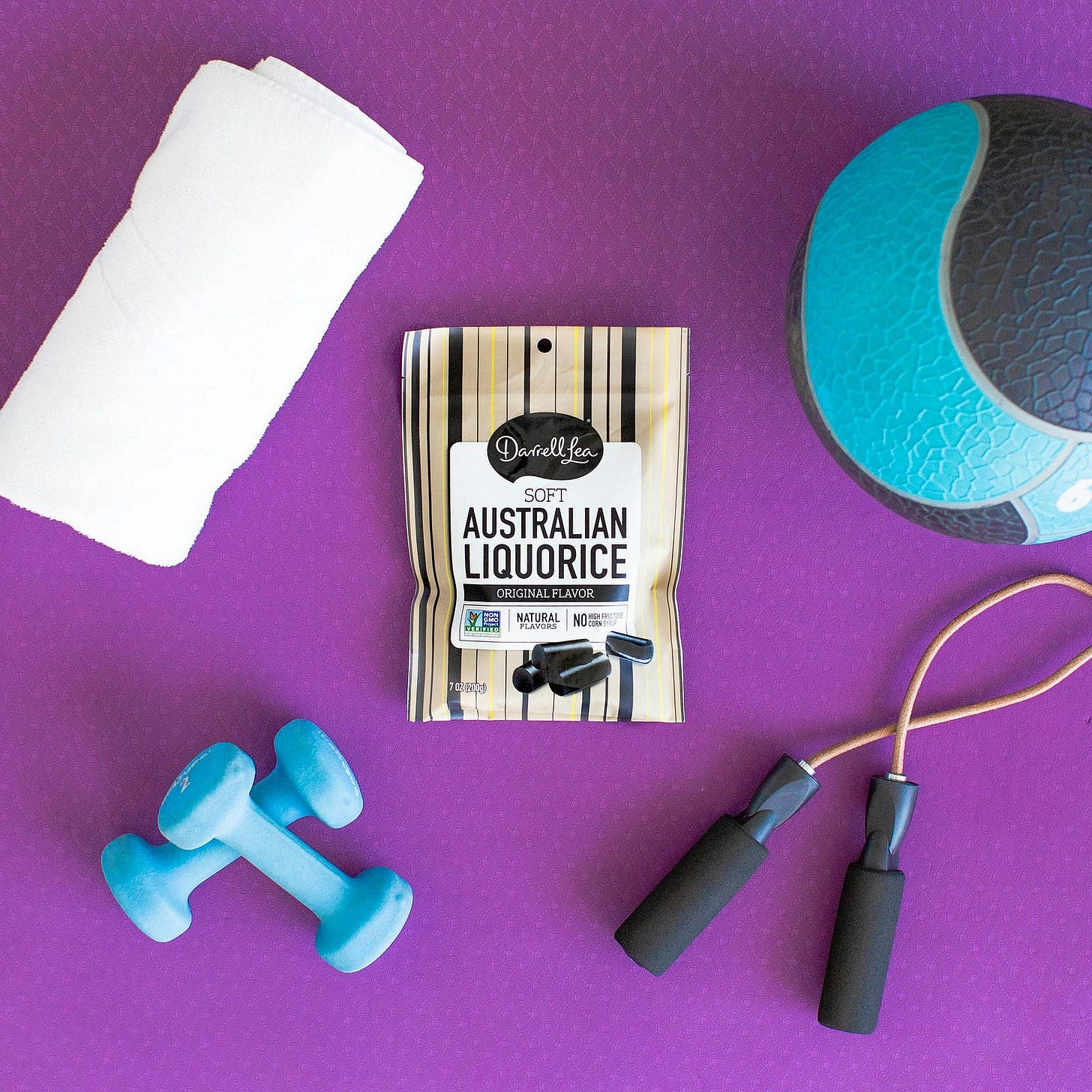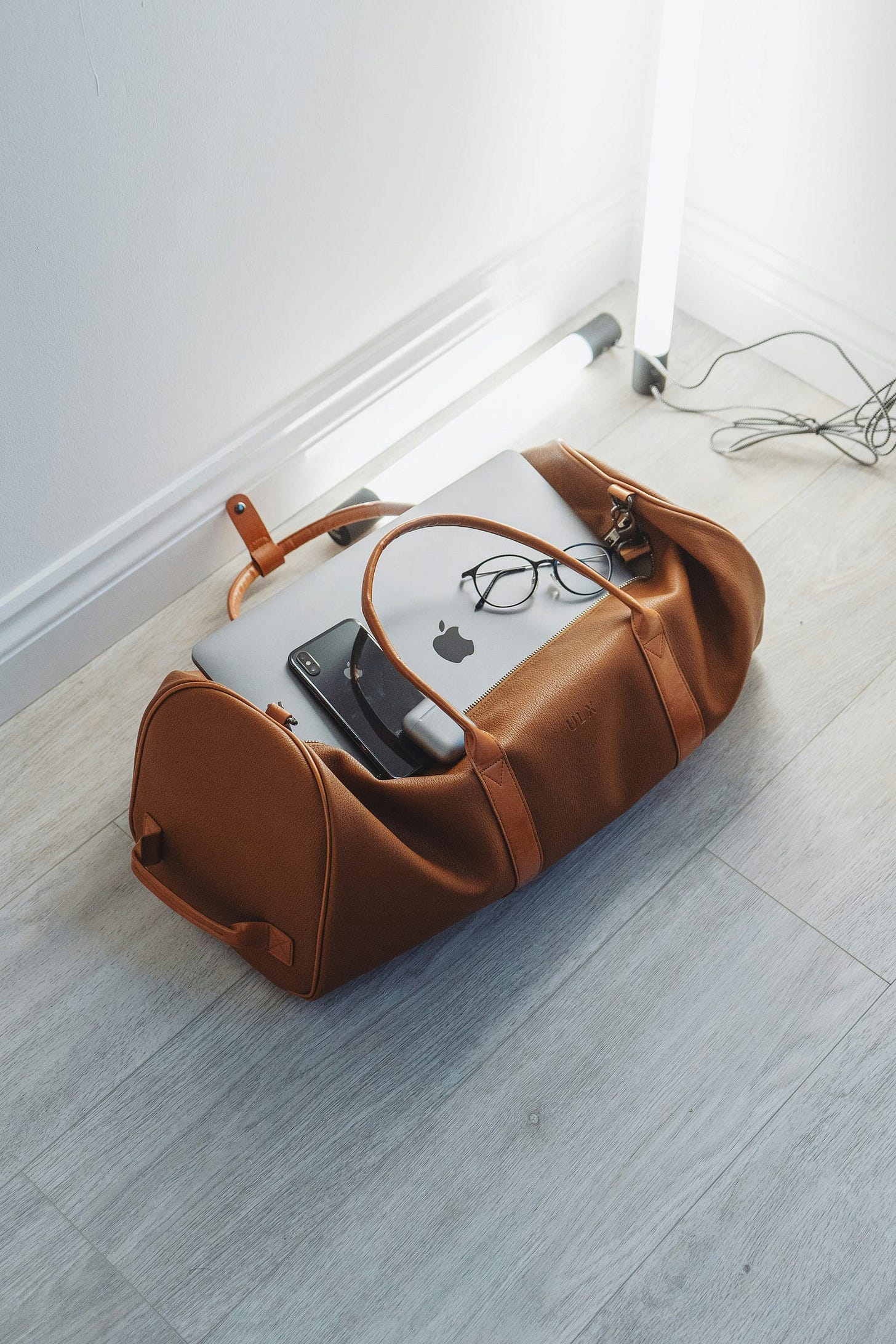
What do those seasoned gym-goers have in their bags?
You don't need to worry about guessing; I'll give you a peek into my gym bag.
This way, you'll have a clear idea of what to pack for your gym sessions, making you feel prepared and ready for your fitness journey.
By the way, I have two gym bags: a small one and a big one. When choosing a gym bag, consider the size, compartments, and durability.
I've consistently carried the small one for over a year, but my lifting belt doesn't fit into it.
On the days I need to wear my belt for workouts, I take it by hand while carrying my small gym bag.
Guess how I feel when I have to do that.
Clumsy!
To solve this problem, I recently bought a bigger bag that fits my lifting belt and everything I take to the gym.
That way, I keep everything compact and organized, with the most frequently used items easily accessible.
So, if you’re serious about being a gym girl/woman/lady, you want to think of your gym bag as a toolbox where you can pull out the tools you need to do your fitness work.
At least that’s how I see my gym bag; that way, I’m not stressed out looking for the tools I need when I have to perform some specific workouts.
I'll show you the treasures in my gym bag and why I have them.
These are not just items but tools that have become a part of my fitness journey. I want to share my experiences to help you on your path.
What’s in my gym bag?

Resistance bands: I have two types: one for my lower body and one for my upper body.
I usually use the short resistance band for my lower body and the long one for my upper body. I use them to warm up and “wake up” my muscles before working out.
So, on the days I’m working out my lower body, you'll see me with a short resistance band, and on the days I’m working out my upper body, you’ll see me with my long resistance band.
That’s pretty straightforward.
Ankle straps: I wear these straps when I work out my lower body.
More specifically, I strap them to my ankles for kickback and sidekick glute exercises on a cable machine. They protect my ankles and aid my movements efficiently on the cable machine.
Wrist wraps: I wear wrist wraps to protect my wrists during back squats and chest press exercises. However, I must confess that I seldom wear them these days. Instead, I wear lifting straps.
Lifting Straps: This brings me to the lifting straps.
I wear these straps for every exercise that requires me to utilize my hands.
You’ll see me wearing these bad boys for everything from deadlifts to chest presses. They protect the pads of my hands, allowing me to become comfortable with my grip.
I’ll tell you a funny story about the first time I tried wearing these straps. I couldn’t figure out how to wear them properly, and I struggled until I found a video on YouTube explaining how to.
So, don’t be like me.
First, wear them on your wrists. Then, loop them across your hands through your thumbs and wrap them around the pads of your hands.
Simple. Eh?
Knee Sleeves: Basically, these bad boys warm your knees.
Some folks say they help you squat better, while others debunk that as a myth.
From my experience, my knee joints are well supported when I squat wearing these bad boys.
Also, I can push through all those gruelling reps during a leg press workout.
Therefore, I wear them throughout the period I’m working my lower body.
Do I squat better because I wear knee sleeves?
Well, you’ll find my answer later. Keep reading.
Lifting Shoes: I wear two different types of shoes. The Vans and TYR shoes.
I wear Vans shoes, which have a flat outsole to deadlift. I don’t deadlift on the days I squat because they are both big compound exercises that can cause fatigue, preventing me from doing other exercises.
Therefore, I dedicate a day to deadlifting, typically when I work out my upper body.
Essentially, the Vans shoes consistently contact the floor, preventing any jiggle.
Please note that “Vans” is a brand name; other brands like Allstar and Converse have similar designs.
On the other hand, I wear the TYR shoes on the days I squat, which are the days I focus on my lower body.
The TYR shoes are for serious lifters.
Like the Vans shoes, these have the same outsole and insole but a raised heel to facilitate squatting.
I aim to squat lower, so I wear these shoes.
Hence, wearing knee sleeves and these shoes helps me to squat lower.
The question about whether or not wearing knee sleeves helps one to squat lower is answered.
End of story!
Regardless, I’m still working on my squats and utilizing a lifting belt to achieve my goal.
Lifting Belt: There’s a debate about whether or not to wear a lifting belt.
Some lifting belt proponents say it helps support the back and prevent injury during significant compound movements like squats and deadlifts.
On the other hand, some say it helps a lifter to brace properly, and it’s only useful when lifting heavy, such as when lifting more than your body weight.
Here’s my personal experience.
When I re-started my fitness journey in 2023, I began by lifting a meagre 20 lbs plus the weight of a typical barbell, about 45 lbs; I then began squatting 65 lbs.
By the end of October 2024, I had been squatting comfortably with 155lbs of weight.
Yes, wearing a lifting belt helps you to brace correctly, as bracing is fundamental to effective squatting.
Also, bracing helps to prevent back injuries that can come with heavy lifting.
Wearing a lifting belt certainly helps me brace correctly and lift heavier weights. I’ll continue wearing it as needed.
Why?
The heavier I lift, the more muscle I build and the stronger I become.
Other treasures in my gym bag
Barbell collars are easy to slide in and lock a barbell quickly and promptly, unlike barbell pins.
I always bring them with me when I use the barbell to work out, which is every day.
Squat edges: In the early days of my fitness journey, I would stand on these bad boys to help me squat better because they had raised platforms.
After I bought my TYR shoes, I stopped using them.
You can use them to perform other exercises, such as goblet squats and lunges. However, you can stack weight plates to achieve a similar raised platform effect, so you don’t need these wedges.
A Jump Rope: I love jump roping to get my cardio in.
I usually jump rope on the days I focus on my upper body. I'll jump rope instead of resting between sets to achieve a high-intensity interval training (HIIT) effect.
For example, when doing three sets of a meadow row exercise.
After the first set, which typically involves twelve reps, I jump rope about fifty times, then do the second set, jump rope again, do the final set, and finally jump rope 150 times!
I repeat the same process during each upper body exercise. On the days I focus on my upper body, I typically do about seven exercises.
That’s a lot of jump roping if you do the maths.
Water bottle: Everybody needs hydration, same for every gymer.
Having a water bottle and drink to stay hydrated between exercises is essential.
I hydrate myself by mixing three supplements in my water: Amino acids, protein, and collagen.
In addition to these supplements, I’ve recently added vitamin C and MSM to my water.
That way, I stay hydrated and nourished before and after workouts.
Eating before working out made me feel bloated, which prevented me from working out effectively.
To combat that, I don’t eat before I go to the gym, which works for me now because I work out after I finish my night shift.
My point is that I need a bottle filled with well-fortified water to nourish my body before and after a workout.
Airpods & iPhone: I wear Airpods to listen to sermons, news, and music while playing them on my iPhone.
Depending on how I feel, I dance, laugh, learn and chat while wearing my AirPods.
These add spice to my workouts, making me enjoy my time at the gym.
Notebook & Pen: Every serious lifter will tell you they have workout plans.
We all need them to maximize our time and workouts at the gym and track our gym progress.
I usually renew my workout plans every six weeks so I don’t stay stale.
When I do so, I need my book and pen to write things down before I develop the muscle memory to know each exercise, rep and weight I need to add as I progress on every workout day.
Of course, I go digital using the Notion app or the Notes app on my iPhone.
However, call me old fashion, and you’ll be right.
I enjoy writing, planning my exercises, and tracking my progress by writing things down in my notebook.
Does that make sense?
Padlock: This is another essential you must take to the gym to keep your belongings safely locked up.
Ensure you don’t lock in the key when using a padlock that needs a key.
I use this padlock type and have yet to lock in my key.
I keep an extra key at home; however, I keep the one I take to the gym using a safety pin.
I usually pin the safety pin on my T-shirt if I'm not wearing leggings with a hidden pocket and a zip.
Just improvising. Eh?
DJI Osmo Pocket 3: This is a new addition to my gym bag in 2025.
Yay!!
I bought it to make video content for demo purposes.
I have yet to use it at the gym, but I can use it discreetly without attracting attention.
Nevertheless, I intend to film myself when I go to the gym in the early morning when there are few people. I plan to go as early as 4 a.m. when I'm not working.
Thankfully, my gym is open 24 hours a day.
I’ll provide a separate review after I use this bad boy for a while. It’s relatively new, so my experience using it is minimal.
Final Thoughts
I hope you have complete access to the treasures in my gym bag.
After all, they’re not hidden anymore from you.
Remember, I didn’t carry all these things in my bag the first time I started my fitness journey.
In fact, I didn’t bring anything to the gym. I wore my workout clothes and workplace sneakers, and of course, I only brought a water bottle.
That’s it!
Thankfully, I registered at a gym where I was given a duffel bag as part of my registration package.
Afterwards, I started making a list of what I needed; I would buy what I wrote on this list each time I had the financial resources to do so and then carry it in my duffel bag.
My point is: You can start where you’re right now.
So, please don’t spend too much time wondering what those gym folks carry in their bags.
Instead, do it; hit the gym.
With time, you’ll build your fitness treasures to carry in your gym bag.




